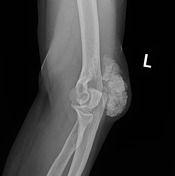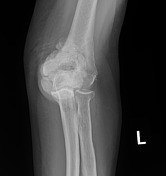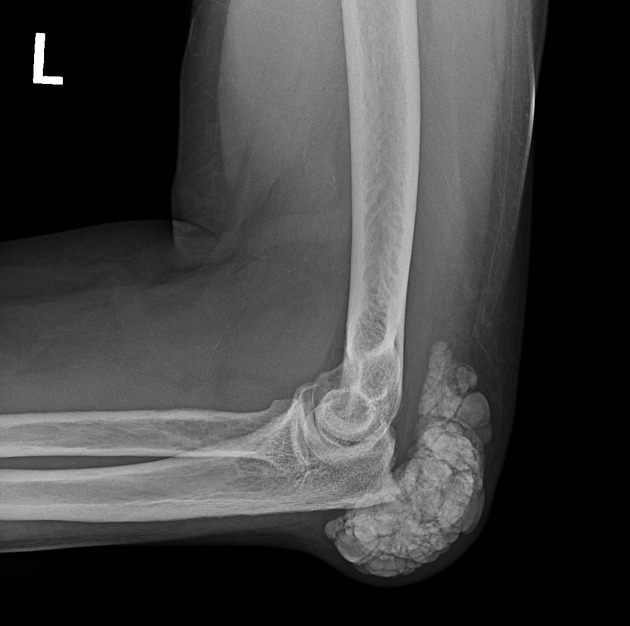Presentation
Left elbow pain and swelling for five months. History of dialysis-dependent renal failure.
Patient Data




"Cloud-like" calcifications in the region of the triceps insertion, olecranon, and olecranon bursa (3.3 x 7.7 x 5.7 cm). There is no connection to the underlying humerus or ulna.
Case Discussion
Tumoral calcinosis occurs when a large amount calcium salts deposit into the soft tissues. The calcium deposition is considered heterotopic, but it is neither ossification nor osteoid matrix formation. The calcifications are separate from bone.
Large amounts of periarticular calcinosis may occur as a result of:
- renal failure
- secondary hyperparathyroidism
or it may be idiopathic in younger people.
A differential diagnosis includes:
-
hydroxyapatite deposition disease (HADD)
- may appear similar, but is limited to a small focus in a tendon or a bursa
- bone forming tumor with osteoid matrix (e.g. parosteal osteosarcoma)
- a wide variety of soft tissue masses with calcification, both benign and malignant
Renal failure appeared to be the precipitating factor for the development of the tumoral calcinosis in this case.




 Unable to process the form. Check for errors and try again.
Unable to process the form. Check for errors and try again.